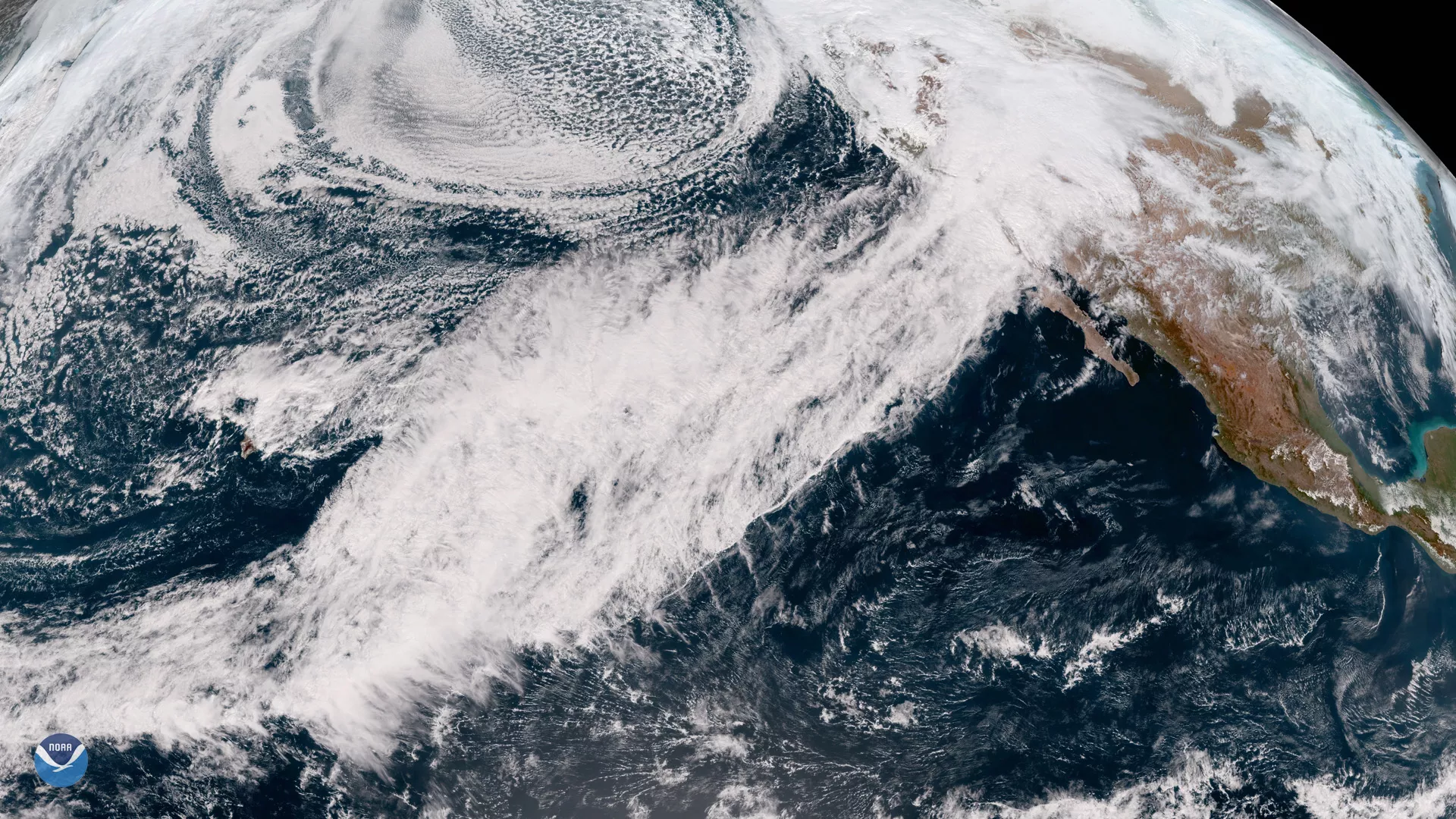
An atmospheric river has drenched California with heavy rain and mountain snow this week, triggering flash floods, mudslides, and winter storm warnings in the Sierra Nevada. The conveyor belt of clouds and moisture stretching across the Pacific easily stands out in this Feb. 14, 2019 image from NOAA's newly operational GOES West (GOES-17) satellite.
The deluge set records in parts of southern California. The National Weather Service reported 10.1 inches of rain fell Thursday at Palomar Observatory northeast of San Diego, the wettest day there since observations began in 1901. In Palm Springs, 3.69 inches fell in 24 hours, making it the city's third-wettest calendar day on record.
The heaviest precipitation is over for southern California, but flood warnings are still in effect from Sacramento to Redding, where more downpours are possible through Friday evening.
East of Sacramento, several mountain resorts near Lake Tahoe received 2 to 3 feet of snow in just 24 hours. The National Weather Service says "travel is highly discouraged" and is forecasting an additional 3 to 6 feet of snow through Sunday morning.
Atmospheric rivers often bring heavy rain and high-elevation snow to the West Coast during winter. Like rivers in the sky, these long, narrow regions of the atmosphere carry enormous amounts of moisture over thousands of miles, from as far away as Hawaii. Though they can cause serious flooding, atmospheric rivers are also a critical water supply for much of the Western U.S. On average, between 30 and 50 percent of annual precipitation in West Coast states occurs during just a few of these events.
A major benefit of NOAA's GOES-17 satellite is that it will help forecasters monitor atmospheric rivers affecting the West Coast. With faster, more accurate data and detailed views of the atmosphere, the National Weather Service can issue timelier, more accurate flood watches and warnings and better predict how much rain or snow will fall in a particular area.
